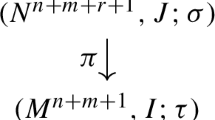Abstract
In this paper we present an approach for stability analysis of high order Sigma-Delta modulators. The approach is based on a parallel decomposition of the modulator. In this representation, the general N-th order modulator is transformed into decomposition of low order modulators, which interact only through the quantizer function. In the simplest case of the loop filter transfer function with real distinct poles, the low order modulators are N first order ones. The decomposition considered helps to extract the sufficient conditions for stability of the N-th order modulator. They are determined by the stability conditions of each of the low order modulators but shifted with respect to the origin of the quantizer function, because of the influence of all other low order modulators. The approach is generalized for the case of repeated poles of the loop filter transfer function.
Similar content being viewed by others
References
J. C. Candy and G. C. Temes (Eds.), Oversampling Delta-Sigma Data Converters. New York: IEEE Press, 1992.
S. R. Norsworthy, R. Schreier, and G. C. Temes (Eds.), Delta-Sigma Data Converters. New York: IEEE Press, 1997.
R. M. Gray, “Oversampled sigma-delta modulation.” IEEE Trans. Commun. 35, pp. 481–489, 1987.
O. Feely and L. O. Chua, “The effect of integrator leak in sigma-delta modulation.” IEEE Trans. Circuits and Systems 38, pp. 1293–1305, 1991.
O. Feely and L. O. Chua, “Nonlinear dynamics of a class of analog-to-digital converters,” Int. J. of Bifurcation and Chaos 2, pp. 325–340, 1992.
O. Feely, “A tutorial introduction to non-linear dynamics and chaos and their application to sigma-delta modulators.” Int. J. Circuit Theory and Applications 25, pp. 347–367, 1997.
P. Steiner and W. Yang, “A framework for analysis of high-order sigma-delta modulators.” IEEE Transactions on Circuits and Systems II: CAS II 44, pp. 1–10, 1997.
P. Steiner and W.Yang, “Stability of high order sigma-delta modulators,” in International Symposium on Circuits and Systems, vol. 3, ISCAS' 96 1996, pp. 52–55.
V. Mladenov, H. Hegt, and A. v. Roermund, “Stability analysis of high order sigma-delta modulators,” in Proc. of the 15th European Conference on Circuit Theory and Design ECCTD, Helsinki University of Technology, Finland, 2001, pp. I-313–I-316.
V. Mladenov, H. Hegt, and A. van Roermund, “On the stability of high order sigma-delta modulators,” in Proceedings of the 8th IEEE International Conference on Electronics, Circuits and Systems (ICECS), Malta, 2001, pp. 1383–1386.
Author information
Authors and Affiliations
Rights and permissions
About this article
Cite this article
Mladenov, V., Hegt, H. & van Roermund, A. On the Stability Analysis of High Order Sigma-Delta Modulators. Analog Integrated Circuits and Signal Processing 36, 47–55 (2003). https://doi.org/10.1023/A:1024489328335
Issue Date:
DOI: https://doi.org/10.1023/A:1024489328335




